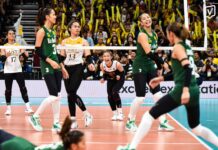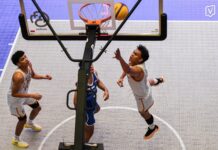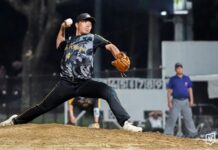DOMINATING the UAAP has become a tradition for UST even without a perfect training venue for its athletes.
With the UST gymnasium hosting several activities like PE classes, cheering practices, and non-athletic events, the main training area becomes a multi-purpose hall of sorts hardly maximized by the athletes themselves.
As a result, some teams had to train off-campus. The fencers had to go to the Philsports Arena, and the badminton players move to the place of their sponsor Hemady Sports Club in Quezon City.
This is just a chunk of the lamentable sports program that the Varsitarian exposed for in a series of Special Reports in 2005.
However, the Thomasian community and the rest of the UAAP may have to brace themselves for the more advanced UST Sports Complex, a state-of-the-art structure set to open in time for the quadricentinnial celebrations in 2011.
“It will not completely answer all of the sports woes, but it will definitely improve much of them,” Athletics moderator Felix Silbor told the Varsitarian.
The homecourt
In the meantime, varsity players will have to continue sharing the UST gym with fellow Thomasian athletes.
“Athletes just make the most out of it,” Fr. Ermito De Sagon, O.P., Institute of Physical Education and Athletics director, said. “While there is still a team that is training, the other team will just do their warm-ups on the sidelines.”
Things look brighter in other areas — physical conditioning, sports equipment, including uniforms.
“Many schools in fact envy our players for having those up-to-date equipment,” de Sagon said, citing teams’ attires and equipment like game balls.
Meanwhile, what was a minor, temporary idea of having the students of the College of Rehabilitation Sciences handle some of the physical conditioning of the athletes in 2005 has now become a major UST strategy.
The tie-up resulted in a practicum program wherein the physical therapy majors are assigned to different teams they help supervise training and therapies in condition with coaches.
“The program has produced good results, and we’re very happy with it,” De Sagon said.
At the same time, the sports sciences facilities in the UST Hospital’s Charity Ward and in the seminary gym are also frequently used, while the weights room in the hospital’s garage is being renovated to aid the physical conditioning of the athletes.
Brawns and brains
The athletes are University scholars as well, so they also have to focus on their academics. However, the trainings often exhaust the athletes even before they can open their books.
This is when the teams’ academic coaches play their part. These managers keep track of how the players are doing academically and try to help in case the players are on the verge of getting axed from the team—either by being relegated to Team B or worse, removed from the line-up—because of failing.
For example, with a “study sentry” like Boy Sablan in the men’s basketball team, no Growling Tiger has been dropped from the line-up because of academic deficiencies since Jemal Vizcarra in 2005.
Not all sports squads get the privilege of being assigned with a curriculum coach though.
“But that is because most of our athletes do well in their academics, especially our taekwondo and chess players,” De Sagon said.
Still, help is just around the corner.
Being members of the Becarios Santo Tomas, the student organization for scholars, athletes get access to free tutorial sessions whenever the student volunteers do community services once in a while.
At the home front
Varsity players recently moved to a new dormitory in Morayta, Boulevard. Unlike the former Isabel building on España which was basically an office building converted into a lodge, the apartment-type quarters now provide meals,and include a mess hall, and well-ventilated rooms for the oft-exhausted athletes.
Alumni support is important too.
“Informal support groups are actually a lot and alive,” said Silbor, particularly referring to the Tiger Pack that the Varsitarian featured in a December article last year. “Many sports teams have their own sponsors along with their managers, but a large-scale support group is yet to be formed.”
With the improvement of the sports program through the years—the upcoming addition of a high-quality sports complex, the gradual rise of alumni support, the acquisition of a better dormitory, and the enhancement of the sports facilities—the general championships in the future would yet be another set of well-deserved sweeps for UST. Arvee A. Fantilagan

















